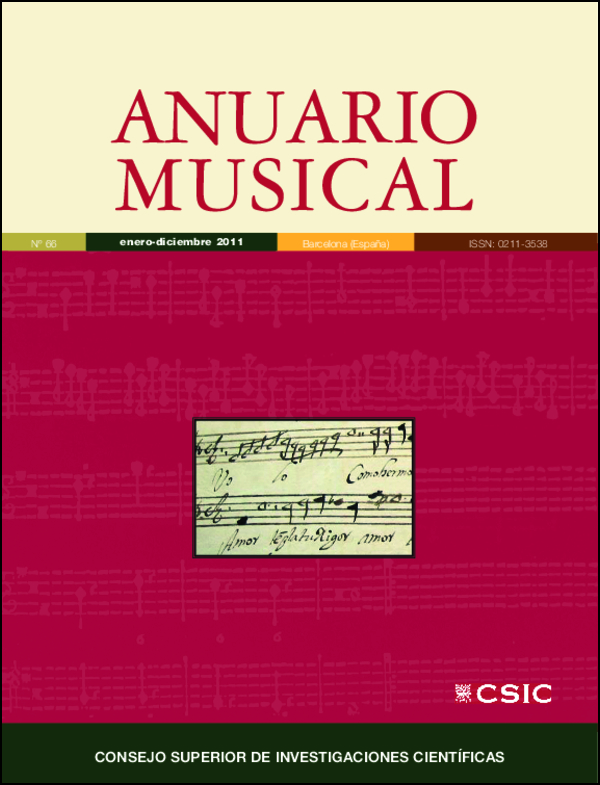The Finale of Wagner’s Götterdämmerung and its Relationship with the baroque ‘Licenza’
DOI:
https://doi.org/10.3989/anuariomusical.2011.66.129Keywords:
Brünnhilde, Dido, Didone abbandonata, Götterdämmerung, Licenza, Metastasio, WagnerAbstract
When Pietro Metastasio, at the beginning of the 1750s, reworked his famous libretto Didone abbandonata from 1724 for a performance in Madrid, he added a licenza, which is introduced by a detailed stage direction. To this stage direction the finale of Richard Wagner’s Götterdämmerung corresponds in a striking way, suggesting a dependence of the newer on the older piece. However, Wagner was not concerned with paying homage to an aristocratic leadership, which is what characterises the baroque licenza, but on the contrary with symbolically representing the end of the old society of gods by referring to an historic element.
Downloads
Downloads
Published
How to Cite
Issue
Section
License
Copyright (c) 2011 Consejo Superior de Investigaciones Científicas (CSIC)

This work is licensed under a Creative Commons Attribution 4.0 International License.
© CSIC. Manuscripts published in both the print and online versions of this journal are the property of the Consejo Superior de Investigaciones Científicas, and quoting this source is a requirement for any partial or full reproduction.
All contents of this electronic edition, except where otherwise noted, are distributed under a Creative Commons Attribution 4.0 International (CC BY 4.0) licence. You may read the basic information and the legal text of the licence. The indication of the CC BY 4.0 licence must be expressly stated in this way when necessary.
Self-archiving in repositories, personal webpages or similar, of any version other than the final version of the work produced by the publisher, is not allowed.














